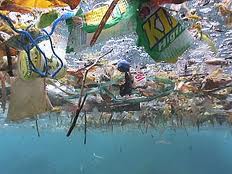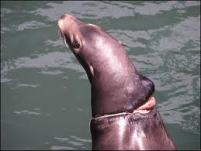Welcome to Plastic Island
Have you ever wondered what happened to the plastic bottle that drifted away after you dropped it in the sea during your last visit to the beach? Well, I can’t tell you exactly where it is now, but I can make a fairly good guess as to where it will end up. If you were on the North American continent east coast or anywhere on the west coast of Europe or North African it will eventually end up some 1,000 miles SSW of the Azores.
If you were on the east coast of South America or the west coast of Central/Southern Africa it will end up some 1,100 miles SW of the island of St. Helena. Now how could he know that I hear you gasp???
Yesterday the report of a 22 year study was released by a group called the Sea Education Association (SEA) at the Ocean Sciences Meeting in Portland USA. In 1997 oceanographers discovered a huge island sized patch of floating plastic debris half way between Hawaii and the American west coast. They gave their discovery the name ‘gyre’ due to its location and how it is formed, and have now found a similar ‘gyre’ in the Atlantic.
 After a study of ocean currents, scientists believe there is now a minimum of five floating conglomerations of plastic in all the world’s oceans. Apart from the one in the Pacific and the recently discovered one in the North Atlantic, there is thought to be one in the South Atlantic and one in the Indian Ocean. It seems a fair bet there will be more.
After a study of ocean currents, scientists believe there is now a minimum of five floating conglomerations of plastic in all the world’s oceans. Apart from the one in the Pacific and the recently discovered one in the North Atlantic, there is thought to be one in the South Atlantic and one in the Indian Ocean. It seems a fair bet there will be more.
We drop a piece of plastic into the sea or local river and forget about it, but that plastic will travel thousands of miles before it reaches its final destination. It travels down rivers to the sea, and is then caught by the currents that carry it out to the deep ocean where eventually it is caught in a place where currents are weaker but surrounded by strong ones. It then moves into a circular motion from where it cannot escape.
During the study period, scientists retrieved 64,000 pieces of plastic rubbish during 6,100 sweeps of the North Atlantic. They consisted of everything from bottle caps and toothbrushes to crates plus a conglomeration of unidentifiable bits.
The maximum density of rubbish they found was 200,000 pieces per square kilometre. Because a large amount drifts just below the surface of the sea it was impossible to get an accurate measurement of the size of these plastic islands.

Trapped In Our Plastic Waste

01/08/2011 at 03:30
Great post. Why o why do we as a society seem Hell-bent on clogging up our oceans with all this plastic c**p.
Glad to see people like yourself getting the word out.
Keep up the good work!
LikeLike
01/08/2011 at 11:58
Hi Gareth,
Yes, it is a shame people do not think before they leave all their litter behind. You should see the beaches near where I live after the tourists have left. It’s disgraceful. As for the plastic in other areas, if people do not use less voluntarily, then the government needs to step in.
Roy.
LikeLike
29/07/2011 at 16:41
[…] https://floroy1942.wordpress.com/2010/02/26/welcome-to-plastic-island/ […]
LikeLike
27/02/2010 at 01:15
It makes me sad just to think HOW terrible the human race is. We continue to throw our rubbish everywhere because we are too darn stupid to realise the impact we have on Mother Nature. I don’t think we will ever be aware of the terrible imprint we have left on this earth. We shoud be ashamed of ourselves, but we are too arrogant to see that. Anyway no matter what you or I, or even the people who work really hard to save the planet do, the awarness of all the damage we cause must start at home. If our parents and teachers do not teach us about the environments importance, we may never save Mother Nature from the terrible ordeal.
Great blog, this is the kind of stuff we must become more and more concious about.
LikeLike